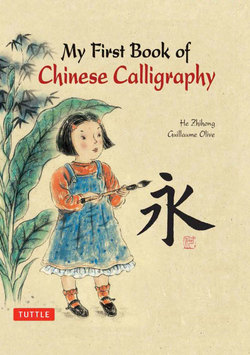Читать книгу My First Book of Chinese Calligraphy - Guillaume Olive - Страница 7
На сайте Литреса книга снята с продажи.
ОглавлениеAccording to legend, there was once an extraordinary being whose name was Cang Jie. He had two pairs of eyes. One day, while observing animal tracks on the ground, he copied them and got the idea of writing. That’s how he invented Chinese characters.
Did you know the Chinese language has no alphabet? Chinese characters are not letters, but drawings. Chinese writing is one of the most ancient systems of writing in the world. It appeared about six thousand years ago, on pottery, when messages were painted and carved onto the clay.
Slowly, writing evolved. That means it developed and got more complicated over time. At first writing was carved on turtle shells and animal bones, then later it was carved on bronze and stone. Characters were of different sizes and there were many versions of the same word. But around the year 200 B.C.E., the ruler nicknamed “the first emperor,” Qin Shihuang, united the whole country and made rules to follow about the way to write each character. Also, after paper was invented, using a brush to write became common.
Century after century, Chinese characters have evolved in different styles that you’ll learn about later in this book. In 1956, China simplified many of the characters by reducing the number of strokes they had.
Chinese writing is made up of around 10,000 characters. In order to read the newspaper, you have to know 3,000.
Look how the Chinese characters have evolved, from the way they were written thousands of years ago to the way we write them today:
Three peaks standing in the sky
This represent the shape of a mountain…
…yes, you’re right! character means “mountain”!
An outline that stretches its arm forward is… a person!
a person!
This one is easy, like a letter D, but since you know that there’s no alphabet It’s the moon! in Chinese: what looks like a “D”?
It’s the moon!
A curving line that flows along, water. with dots beside it like drops or banks of a river is…
water.
A person, with a stroke on top. What do you think it is?
